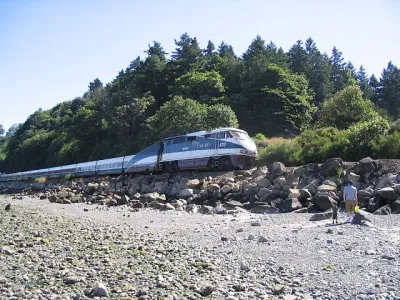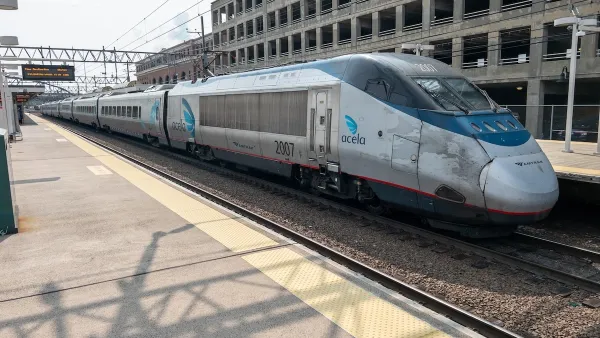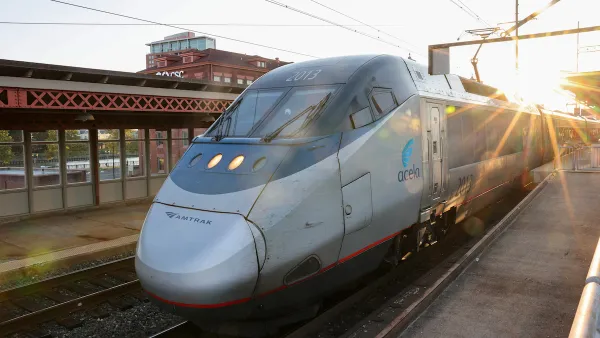Language in the new infrastructure bill calls for the agency to prioritize ridership and service levels over profitability.

"2021 will be a defining moment for the future of passenger rail in America," writes Jake Blumgart. "Amtrak faces huge challenges, but the systemic changes to travel and work life wrought by the pandemic also present an opportunity to fundamentally rethink how the agency operates." Meanwhile, the new infrastructure bill "could allow Amtrak’s executives to make paradigm-shifting operational changes — placing ridership over revenues and faster speeds over minimizing costs."
"In a country where transportation is the largest source of greenhouse emissions, there is no cleaner way to travel than by train." But the business travel that was the lifeblood of Amtrak's Northeast Corridor services "remains severely constrained," and prohibitively expensive fares lead travelers to choose driving instead. Outside of the Northeast Corridor, it isn't the cost but rather "the infrequency and unreliability of the trains that makes Amtrak uncompetitive."
Part of the problem, says Blumgart, is Amtrak's history: "the legislation creating Amtrak specifies that it should be operated and managed as a for-profit service, something that no other country’s rail network requires or accomplishes." According to Amtrak public relations manager Kimberly Woods, "[b]ecause Amtrak is operated as a for-profit company and is required by law to maximize revenues, its fares vary based upon demand, like airlines and intercity buses." The revised mandate proposed in the infrastructure bill "would get rid of the Nixon-era language about minimizing subsidies and instead refocus the agency’s mission on expanding passenger rail capacity and adding ridership," giving it more flexibility to experiment with fare structures. "Just as owners of office buildings and commuter rail lines are being forced to grapple with a new reality, perhaps changes to ridership wrought by the pandemic will force policymakers to change."
FULL STORY: Will Amtrak Make Fares Cheaper as Business Travel Drops?

National Parks Layoffs Will Cause Communities to Lose Billions
Thousands of essential park workers were laid off this week, just before the busy spring break season.

Retro-silient?: America’s First “Eco-burb,” The Woodlands Turns 50
A master-planned community north of Houston offers lessons on green infrastructure and resilient design, but falls short of its founder’s lofty affordability and walkability goals.

Delivering for America Plan Will Downgrade Mail Service in at Least 49.5 Percent of Zip Codes
Republican and Democrat lawmakers criticize the plan for its disproportionate negative impact on rural communities.

Test News Post 1
This is a summary

Test News Headline 46
Test for the image on the front page.

Balancing Bombs and Butterflies: How the National Guard Protects a Rare Species
The National Guard at Fort Indiantown Gap uses GIS technology and land management strategies to balance military training with conservation efforts, ensuring the survival of the rare eastern regal fritillary butterfly.
Urban Design for Planners 1: Software Tools
This six-course series explores essential urban design concepts using open source software and equips planners with the tools they need to participate fully in the urban design process.
Planning for Universal Design
Learn the tools for implementing Universal Design in planning regulations.
EMC Planning Group, Inc.
Planetizen
Planetizen
Mpact (formerly Rail~Volution)
Great Falls Development Authority, Inc.
HUDs Office of Policy Development and Research
NYU Wagner Graduate School of Public Service





























